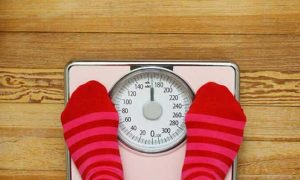Anybody who has attempted to get more fit will be know about these nine disappointing words: the last five kilos are the hardest to lose.
You’re going to hit your objective weight, however unexpectedly the scales won’t move – despite the fact that you’re actually following a similar solid eating regimen, way of life propensities, and exercise plan.
There’s a logical reason for why losing the last couple of kilos is hard, called the weight reduction level.
In any case, before you hit Google for one of those projects promising to assist you with losing the last five kilos, here’s some significant data about why it happens, and five straightforward things you can do to get through it.
Figuring out the weight reduction level
The weight reduction level is fundamental science.
At the point when your body registers something compromising its endurance, it naturally sets off a progression of physiological reactions to safeguard against the danger.
So when we change our eating regimen and decrease our calorie admission, our body registers we’re getting thinner and trusts it’s under danger. It adapts for insurance, diminishing our metabolic rate and consuming less energy, easing back the rate at which we shed pounds.
It likewise secretes more significant levels of a craving chemical called ghrelin, which is known to increment hunger and advance the protection of fat stores.
Research has shown this level begins to sneak in anyplace somewhere in the range of three and a half year of weight reduction, and afterward commonly weight recover happens. So for those expecting to lose a lot of weight, the level will be obvious well before the last five kilos.
A weight reduction level can be difficult to break. Anything the time span, it’s a sign your beforehand fruitful way to deal with shedding pounds needs change.
You can do this.

1. Revisit your weight-loss goal
The first and most significant thing you might have to change when you hit a weight reduction level is your meaning of solid body weight.
Ask yourself: what’s so extraordinary about the weight I’m attempting to accomplish?
Many individuals utilize the weight file (BMI) to lay out their weight reduction objective however the number on the scales – and the score created when you enter your weight and level into the BMI mini-computer – is hogwash. It doesn’t recount the entire story of being a solid weight.
This is on the grounds that the BMI mini-computer misses two additional significant measures: muscle to fat ratio and muscle to fat ratio circulation.
On the off chance that you’ve been practicing routinely as a feature of your weight reduction plan, you’ll have acquired muscle, or worked on your muscle-to-fat proportion, and muscle is heavier than muscle to fat ratio, influencing the number on the scales.
You’re likewise liable to have changed where fat is disseminated in your body, decreasing how much undesirable fat put away around the stomach, near the organs, accordingly lessening your gamble of sickness.
So snatch the measuring tape, check how your garments fit, and ponder how you feel to affirm whether you truly need to lose those last couple of kilos. Pursue a midsection outline of around 80 cm for ladies and around 90-94 cm for men.
2. Focus on meal size throughout the day
The ongoing craze is irregular fasting. This frequently implies breakfast is quick to be rejected from the menu trying to cut calories from the eating regimen and abbreviate the time you’re permitted to eat over the course of the day.
Yet, when you eat and the amount you eat at every feast does matter, and it’s morning meal that is the most significant.
Controlled research studies have shown this is the point at which your body best purposes the calories you put in – truth be told, it consumes the calories from a feast over twice more productively in the first part of the day contrasted and the night.
Rather than lessening your eating window, load up your morning meal, and decrease the size of your night feast.
3. Consider more strength-building exercises
Depending on diet alone to get in shape can decrease muscle alongside muscle to fat ratio. This eases back your digestion, and makes it harder to keep the load off in the long haul.
Any active work will go far to saving your bulk, yet it’s critical to consolidate several days of solidarity building practices in your week after week work-out daily schedule.
Practices utilizing body weight – like push-ups, pull-ups, boards, and air squats – are similarly all around as viable as lifting loads in the rec center.
4. Review your food intake
As you lose weight, your body requires less fuel, so reviewing and adjusting your calorie intake is essential when you hit a weight-loss plateau.
Generally speaking, you need to consume 10 percent fewer calories when you reduce your weight by 10 percent, just to maintain the new weight. But this shouldn’t mean deprivation or starvation.
Instead, you should be focusing on an abundance of nutrient-dense foods and keeping the treats and takeaway to just once per week.
5. Check your stress
Stress will derail your weight-loss success. Stress increases your body’s production of cortisol, promoting fat storage and triggering unhealthy food cravings.
The best type of stress management is exercise. To encourage more exercise, take up something you enjoy, no matter what it is. But make sure to include variety, as doing the same routine every day is a sure-fire way to get bored and avoid activity, and can also make it hard to hit your goals.
The bottom line
A weight-loss plateau is frustrating and can derail your diet attempt.
Understanding why the weight-loss plateau occurs, making sure the weight-loss target you’ve set is realistic, and following the steps above will get you back on track.
Nick Fuller, Charles Perkins Centre Research Program Leader, University of Sydney





